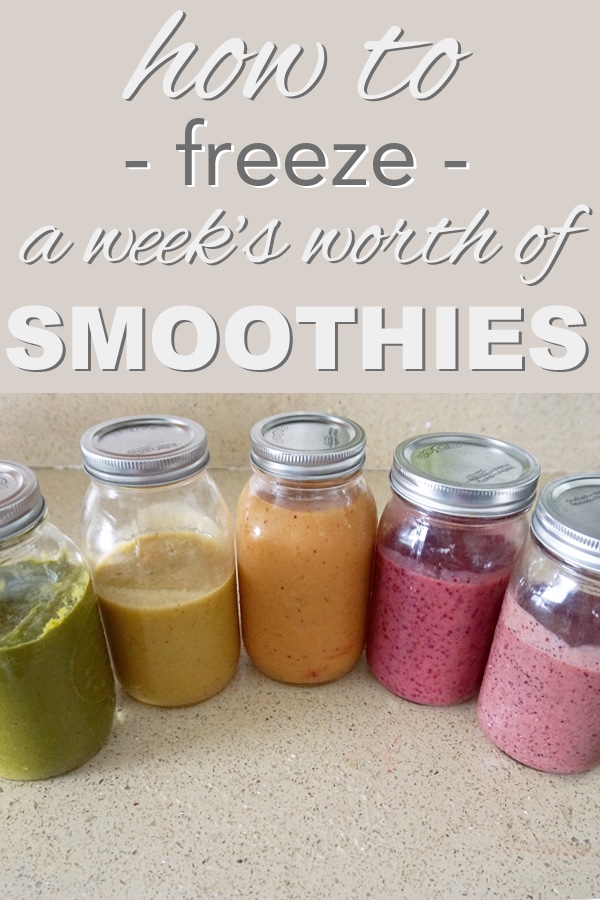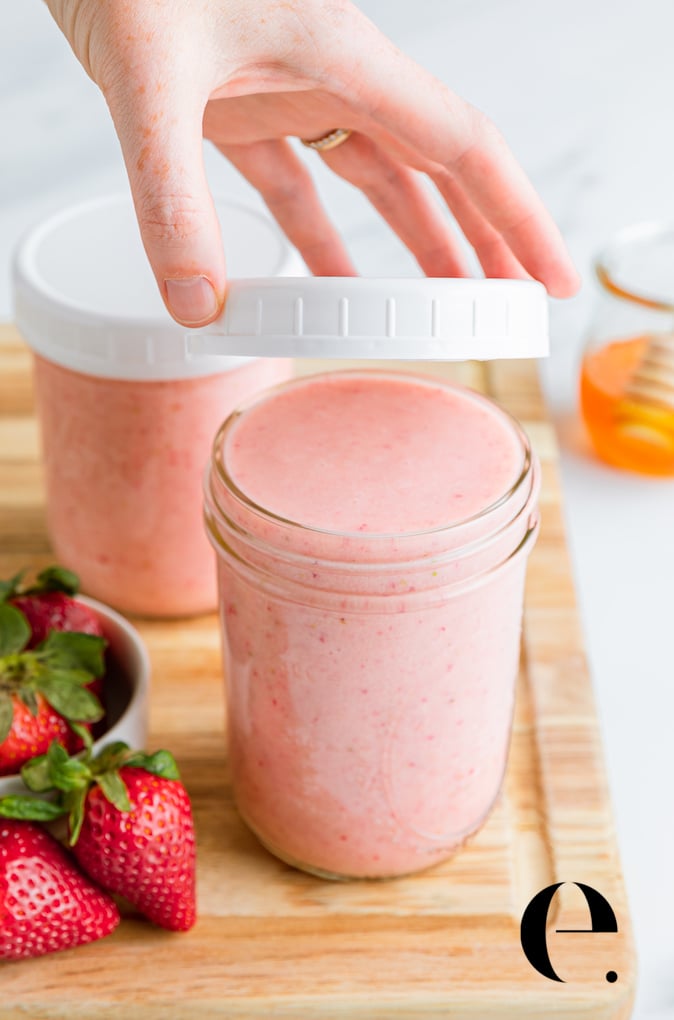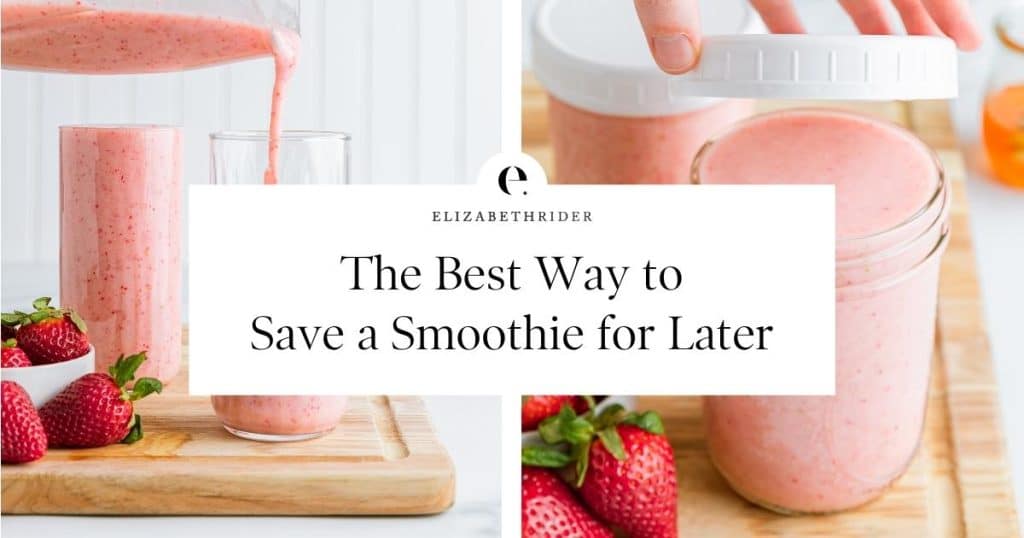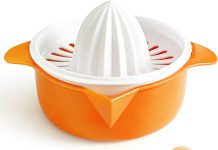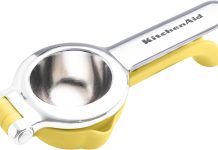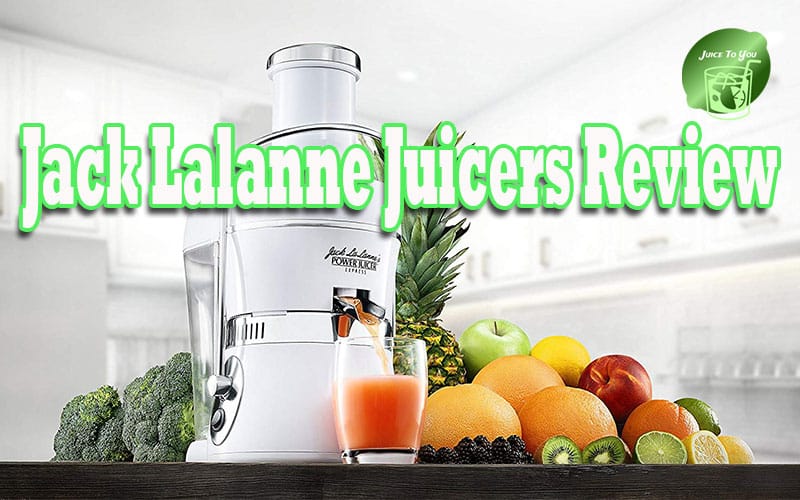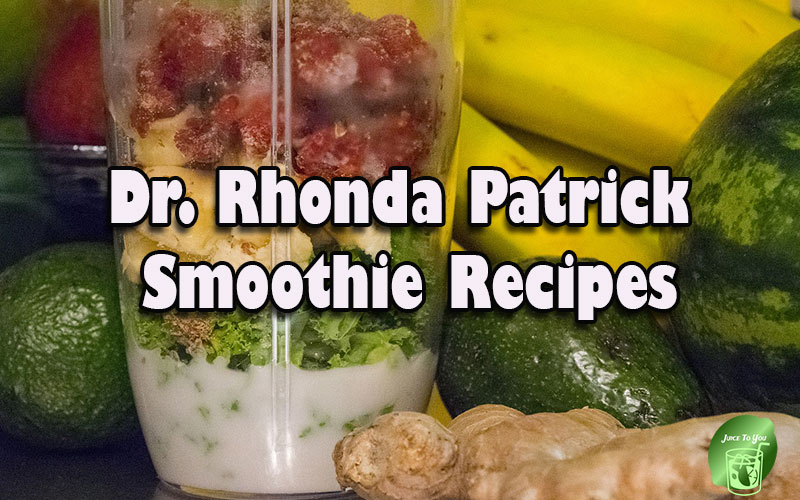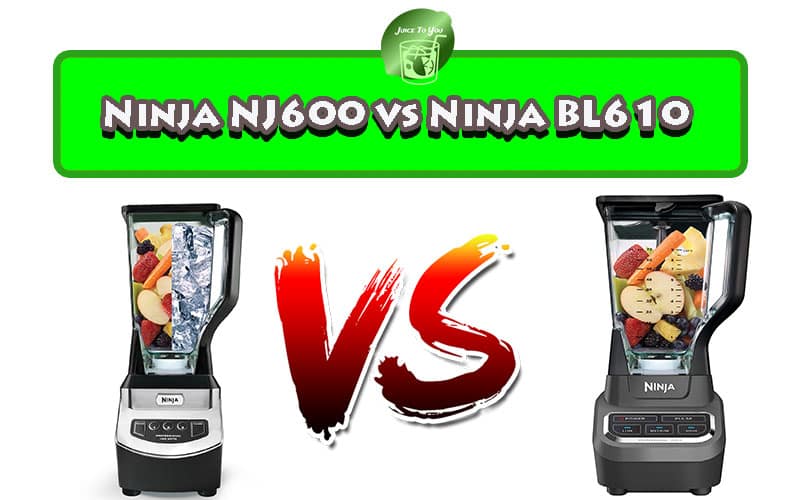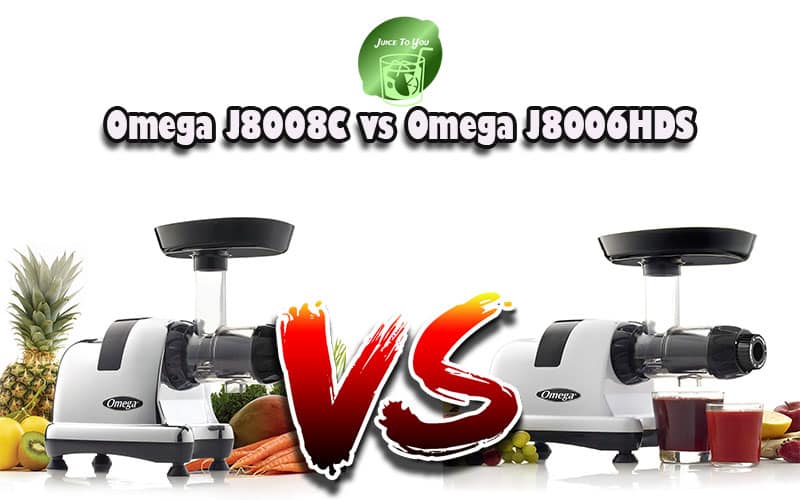Let’s talk about the ultimate dilemma that many of us face: what to do with leftover juice or smoothies. We all have those moments when we make a bit too much of our favorite drink and wonder if we can save it for later. Well, good news! In this article, we’re going to explore the possibility of freezing juice or smoothies without losing their taste and nutrients. So, sit tight and get ready to discover a delicious way to make your favorite beverages last longer.
Review contents
Overview
What is Freezing
Freezing refers to the process of lowering the temperature of a liquid or food item to a point where it solidifies and can be stored for an extended period. This preservation method helps to maintain the freshness, taste, and nutrients of the items being frozen.
Advantages of Freezing
Freezing has several advantages when it comes to preserving food and beverages. It allows us to prolong the shelf life of items, reducing food waste and saving money. Freezing also helps to preserve the nutritional value and flavor of the food or beverage, ensuring that we can enjoy them at a later time.
Can You Freeze Juice or Smoothies
Yes, you can freeze both juice and smoothies for later consumption. Freezing these beverages is a convenient way to have a quick and refreshing drink on hand when you’re in a rush or in need of a healthy snack. However, there are a few factors to consider before freezing juice or smoothies to ensure optimal results.
Things to Consider Before Freezing
Before freezing juice or smoothies, there are a few things to consider. First, it’s important to note that the texture of the beverage may change upon thawing, so some adjustments may be needed when consuming the frozen version. Additionally, the container you choose for freezing and storing the juice or smoothie will impact the quality and shelf life. Proper labeling and dating of the containers is also essential for keeping track of the freezing duration. Now, let’s explore the process of freezing juice and smoothies in more detail.
Freezing Juice
Why Freeze Juice
Freezing juice allows you to have a fresh and healthy beverage readily available whenever you need it. It’s particularly useful when you have excess juice that would otherwise go to waste. Freezing juice can help you save money and reduce food waste, while still enjoying the taste and nutrients of the juice.
Types of Juice to Freeze
Not all types of juice freeze well, as some may experience flavor or texture changes after freezing and thawing. It’s best to freeze juices that are naturally high in acidity, such as citrus juices (orange, lemon, lime), as they tend to retain their quality better during freezing.
Preparing Juice for Freezing
Before freezing juice, make sure to strain it to remove any pulp or fruit solids. This step will help maintain the smooth texture of the juice when it is thawed. You can strain the juice using a fine-mesh sieve or a cheesecloth.
Steps to Freeze Juice
- Pour the strained juice into a suitable container, leaving some space at the top for expansion during freezing.
- Seal the container tightly to prevent any air from entering.
- Label the container with the date of freezing to keep track of its shelf life.
Storing Frozen Juice
When it comes to storing frozen juice, it’s crucial to choose the right container. Plastic containers or freezer-safe glass jars are suitable options. Make sure the containers are airtight and leak-proof to prevent freezer burn or contamination. Store the juice in the freezer at a consistent temperature of 0°F (-18°C) or below to maintain its quality.
Thawing Frozen Juice
To thaw frozen juice, simply transfer the container from the freezer to the refrigerator and let it thaw overnight. Alternatively, you can also thaw the juice by placing the sealed container in a bowl of cold water. Avoid using warm water or microwaving the juice for thawing, as it can compromise the quality of the juice.
Tips for Freezing Juice
- Freeze juice in small, single-serving containers to easily portion it out.
- Consider using ice cube trays for freezing small amounts of juice, which can be conveniently added to smoothies or as an ice-cold addition to water.
- Avoid freezing juice in glass bottles with narrow necks, as they may crack or break during the freezing process.
This image is property of www.goingzerowaste.com.
Freezing Smoothies
Why Freeze Smoothies
Freezing smoothies is a great way to preserve the nutritional content of the ingredients while maintaining their taste and freshness. Having pre-prepared smoothie packs in the freezer can save time and make it easier to enjoy a healthy and delicious smoothie whenever you want.
Types of Smoothies to Freeze
Most smoothies can be successfully frozen, whether they are made with fruits, vegetables, or a combination of both. However, it’s important to note that some ingredients, such as dairy products, may experience texture changes when frozen. To mitigate this, you can opt for dairy-free alternatives or make adjustments to the recipe before freezing.
Preparing Smoothies for Freezing
When preparing smoothies for freezing, it’s best to avoid adding ice cubes or ingredients that may become watery when thawed, such as cucumbers or watermelon. Instead, focus on using ingredients that freeze well and maintain their texture, such as berries, bananas, or leafy greens.
Steps to Freeze Smoothies
- Blend your smoothie ingredients until they reach a smooth and creamy consistency.
- Pour the smoothie into a suitable container, leaving some room at the top for expansion during freezing.
- Seal the container tightly to prevent air from entering.
- Label the container with the date to keep track of its shelf life.
Storing Frozen Smoothies
Just like with freezing juice, choosing the right container is crucial for storing frozen smoothies. Opt for airtight and freezer-safe containers that can withstand low temperatures without cracking or breaking. Plastic containers or freezer-safe glass jars with wide mouths are ideal options. Store the smoothie packs in the freezer at a consistent temperature of 0°F (-18°C) or below.
Thawing Frozen Smoothies
To thaw frozen smoothies, transfer the container from the freezer to the refrigerator and allow it to thaw overnight. If time is limited, you can also thaw the smoothie by running the container under cold water or blending it with a splash of liquid. Avoid using warm water or a microwave for thawing, as it can affect the texture and taste.
Tips for Freezing Smoothies
- Consider freezing individual portions of smoothies in ice cube trays for easy portioning and blending.
- Add a squeeze of lemon or lime juice to smoothies before freezing to help preserve their color.
- For smoothies with added yogurt or milk, choose dairy-free alternatives to prevent unwanted texture changes.
Benefits of Freezing Juice and Smoothies
Preserve Nutrients
Freezing juice and smoothies can help retain the nutritional value of the ingredients. While some loss of nutrients may occur during freezing, it is minimal compared to other preservation methods such as canning or dehydrating. By freezing these beverages, you can enjoy the benefits of fresh fruits and vegetables even when they are out of season.
Save Time
By freezing juice and smoothies, you can save time in your daily routine. You can prepare batches of juice or smoothies ahead of time and have them readily available when you need them. This is especially beneficial for busy individuals or those who prefer a quick and healthy option for breakfast or snacks.
Reduce Food Waste
Freezing juice and smoothies is an excellent way to reduce food waste. Instead of letting excess produce, juices, or smoothies go to waste, freezing them allows you to preserve their quality and enjoy them at a later time. This not only saves money but also contributes to a more sustainable lifestyle.
Convenience
Having frozen juice and smoothies on hand offers convenience and flexibility in meal planning. Whether it’s for a quick breakfast, a refreshing snack, or as a base for a new culinary creation, frozen juice and smoothies can be easily incorporated into your daily routine.
This image is property of www.elizabethrider.com.
Factors to Consider
Texture Changes
It’s essential to note that freezing juice or smoothies may result in texture changes when they are thawed. Some beverages may separate or become slightly grainy. However, these changes in texture can often be mitigated by giving the juice or smoothie a good shake or a quick blend after thawing.
Separation
Due to the different densities of ingredients, separation may occur during the freezing and thawing process. Ingredients like pulp, fruit solids, or fats may float to the top or settle at the bottom of the container. To minimize separation, make sure to blend your juice or smoothie thoroughly before freezing and give it a gentle shake or stir after thawing.
Container Selection
Choosing the right container for freezing juice or smoothies is crucial for maintaining their quality. Opt for airtight and freezer-safe containers that can withstand low temperatures without cracking or breaking. Plastic containers or freezer-safe glass jars with wide mouths are ideal options. Avoid using containers with narrow necks, as they can make it challenging to pour or extract the frozen beverage.
Labeling and Dating
Properly labeling and dating your frozen juice or smoothie containers is important for keeping track of their shelf life. Use waterproof labels or permanent markers to indicate the freeze date. This will help you consume the oldest beverages first and ensure that you enjoy them within their recommended storage duration.
Storage Duration
While frozen juice and smoothies can retain their quality for an extended period, it’s recommended to consume them within three to six months for optimal flavor and nutritional value. Over time, both the taste and texture of the frozen beverages may start to deteriorate. By consuming them within the suggested timeframe, you can ensure the best experience.
Frequently Asked Questions (FAQs)
Can I freeze fresh juice?
Yes, you can freeze fresh juice. Strain the juice to remove any pulp or fruit solids, then pour it into a suitable container, leaving space for expansion. Seal the container tightly, label it with the date, and store it in the freezer.
Can I freeze homemade smoothies?
Absolutely! Homemade smoothies can be frozen for future consumption. Blend your smoothie ingredients until smooth and creamy, then pour them into freezer-safe containers. Make sure to seal the containers tightly, label them, and store them in the freezer.
Can I freeze store-bought juice?
Yes, store-bought juice can be frozen. It’s best to transfer the juice to a freezer-safe container before freezing. Follow the same steps for preparing, freezing, storing, and thawing the juice as mentioned earlier.
Can I freeze pre-packaged smoothies?
Pre-packaged smoothies can be frozen, but it’s essential to check the packaging for specific freezing instructions. Some pre-packaged smoothies may require thawing before freezing, while others can be frozen directly in the original container.
How long can I freeze juice or smoothies?
For optimal quality, it’s recommended to consume frozen juice or smoothies within three to six months. While they may still be safe to consume after this time, both the taste and texture may start to deteriorate.
Can I freeze juice or smoothies in glass containers?
You can freeze juice or smoothies in glass containers as long as they are freezer-safe and have wide mouths. Avoid using glass bottles with narrow necks, as they may crack or break during the freezing process.
What is the best container to freeze juice or smoothies in?
Plastic containers or freezer-safe glass jars with airtight seals and wide mouths are ideal for freezing juice or smoothies. These containers are sturdy enough to withstand freezing temperatures without cracking and allow for easy pouring or scooping.
Can I freeze juice or smoothies with added yogurt or milk?
If you plan to freeze juice or smoothies with added yogurt or milk, it’s best to opt for dairy-free alternatives. While dairy-based products can be frozen, they may experience changes in texture when thawed. Using dairy-free alternatives ensures a smoother texture after freezing and thawing.
Can I add ice to my smoothie before freezing?
It’s not necessary to add ice to your smoothie before freezing. Ice cubes can cause the smoothie to become watery when thawed. By using ingredients that freeze well and maintain their texture, such as frozen fruits or vegetables, you can achieve the desired thickness without dilution.
Can I freeze citrus juice or smoothies?
Citrus juices, such as orange, lemon, or lime juice, freeze well and can be enjoyed later. Their natural acidity helps retain their quality during freezing. When it comes to citrus smoothies, consider the other ingredients included in the recipe, as some may have texture changes when frozen.
This image is property of www.elizabethrider.com.
Conclusion
Summary of Freezing Juice and Smoothies
Freezing juice and smoothies is a convenient and practical way to preserve these beverages for later consumption. Whether you have excess juice that would otherwise go to waste or want to have pre-prepared smoothie packs ready to enjoy, freezing offers several benefits. By following the proper preparation, freezing, storage, and thawing methods, you can maintain the taste, nutrients, and freshness of your favorite juices and smoothies.
Enjoying Frozen Juice and Smoothies
Having a freezer stocked with frozen juice and smoothies allows you to enjoy a refreshing and healthy beverage at any time. So go ahead and experiment with freezing different juice and smoothie combinations, adjusting recipes as needed, and experience the convenience and joy of enjoying these refreshing treats whenever you desire. Cheers to frozen goodness!


